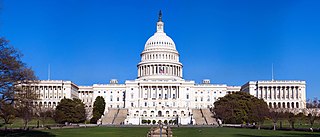
Elections to the United States House of Representatives for the 109th Congress were held on November 2, 2004. The House of Representatives has 435 seats. It coincided with the reelection of President George W. Bush. In the 108th Congress, Republicans held 227 seats, Democrats held 205, with two Republican vacancies and one independent. As a result of this election, the 109th Congress began composed of 232 Republicans, 201 Democrats, one independent, and one vacancy. The Republicans thereby built up their House majority by 3 seats.

The United States Senate elections of 1936 coincided with the reelection of President Franklin D. Roosevelt. The Great Depression continued and voters backed progressive candidates favoring Roosevelt's New Deal in races across the country. The Democrats gained 5 net seats during the election, and in combination with Democratic and Farmer–Labor interim appointments and the defection of George W. Norris from the Republican Party to become independent, the Republicans were reduced to 16 seats, the most lopsided Senate since Reconstruction.

The United States Senate elections of 1928 were elections that coincided with the presidential election of Republican Herbert Hoover. The strong economy helped the Republicans to gain seven seats from the Democrats.

The 1952 United States House of Representatives elections was an election for the United States House of Representatives in 1952 which coincided with the election of President Dwight Eisenhower. Eisenhower's Republican Party gained 22 seats from the Democratic Party, gaining a majority of the House. However, the Democrats technically had almost 250,000 more votes (0.4%). This would be the last time the Republican Party won a majority in the House until 1994. It was also the last election when both major parties increased their share of the popular vote simultaneously, largely due to the disintegration of the American Labor Party and other third parties. Finally, it would be the last time either party gained new control of the House of Representatives, coinciding with a presidential election.

The 1942 United States House of Representatives elections was held in the middle of President Franklin D. Roosevelt's third term.
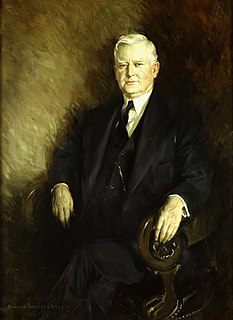
The 1932 United States House of Representatives elections was an election for the United States House of Representatives in 1932 which coincided with the landslide election of President Franklin D. Roosevelt.
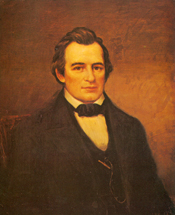
Elections to the United States House of Representatives for the 28th Congress were held during President John Tyler's term at various dates in different states between August 1842 and February 1844.
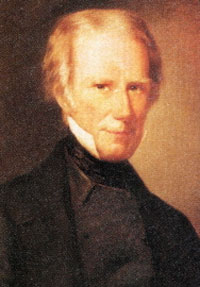
Elections to the United States House of Representatives for the 18th Congress were held at different dates in each state between July 1, 1822 and August 14, 1823 during James Monroe's second term in office. This was the first election based on the results of the 1820 Census, which added a total of 26 seats to the House. Four states lost one seat each, while nine states gained anywhere between one and eight seats.

Elections to the United States House of Representatives for the 17th Congress took place in the various states between July 3, 1820 (Louisiana) and August 10, 1821 (Tennessee). In four states the election coincided with the taking of the 4th Census. Future enumerations would henceforth be held at a different time of year.

Elections to the United States House of Representatives for the 16th Congress were held in the various states between April 28, 1818 and August 12, 1819, with Alabama electing its first representatives September 20–21, 1819 during James Monroe's first term. The Congress assembled December 6, 1819.

Elections to the United States House of Representatives for the 13th Congress were held at different dates in the various states between August 3, 1812 and April 30, 1813 as James Madison was re-elected to a second term as President. The Congress convened on May 24, 1813.

Elections to the United States House of Representatives for the 12th Congress were held in the various states between April 1810 and August 1811 during James Madison's first term in office. Louisiana elected its first representative in September 1812. Congress assembled on November 4, 1811. The first session witnessed the unprecedented occurrence of a new member, Henry Clay, being elected Speaker of the House. This has happened only once since, in 1860 when William Pennington was elected to the post.
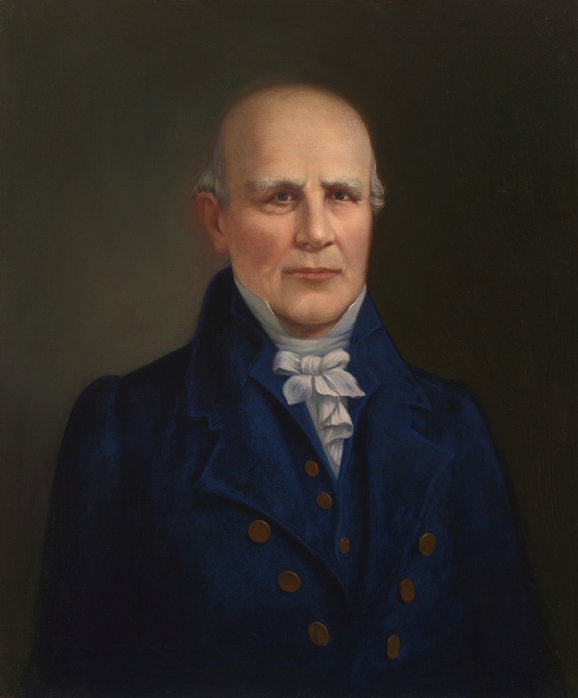
Elections to the United States House of Representatives for the 8th Congress were held at various dates in each state, from April 26, 1802 to December 14, 1803 during Thomas Jefferson's first term in office. It was common in the early years of the United Congress for some states to elect representatives to a Congress after it had already convened. In the case of the 8th Congress, the representatives from New Jersey were only elected after its first meeting on October 17, 1803.

Elections to the United States House of Representatives for the 3rd Congress were held in 1792 and 1793, coinciding with the re-election of George Washington as President. While Washington ran for president as an independent, his followers formed the nation's first organized political party, the Federalist Party, whose members and sympathizers are identified as pro-Administration on this page. In response, followers of Thomas Jefferson and James Madison created the opposition Democratic-Republican Party, who are identified as anti-Administration on this page. The Federalists promoted urbanization, industrialization, mercantilism, centralized government, and a broad interpretation of the United States Constitution. In contrast, Democratic-Republicans supported the ideal of an agrarian republic made up of self-sufficient farmers and small, localized governments with limited power.
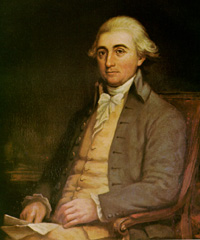
Elections to the United States House of Representatives for the 2nd Congress took place in 1790 and 1791, in the middle of President George Washington's first term. While formal political parties still did not exist, coalitions of pro-Washington (pro-Administration) representatives and anti-Administration representatives each gained two seats as a result of the addition of new states to the union. Speaker Frederick Muhlenberg, who had led the Pro-Administrationists in 1789, switched loyalties to the Anti-Administrationists during the tenure of the 1st Congress. He failed to win election to the Speakership as their leader as a result of these elections, and was succeeded by Jonathan Trumbull Jr., who became the 2nd Speaker of the House.

The 2007 United States elections were held on Tuesday, November 6. During this off-year election, the only seats up for election in the United States Congress were special elections held throughout the year. None of these congressional seats changed party hands. There were also several gubernatorial races and state legislative elections, and numerous citizen initiatives, mayoral races in several major cities, and several types of local offices on the ballot.

The 1970 Massachusetts general election was held on November 3, 1970, throughout Massachusetts. Democratic and Republican candidates were selected in party primaries held September 15, 1970.
Elections to the United States House of Representatives in Pennsylvania for the 6th Congress were held October 9, 1798

Although Maine neither gained nor lost seats after the 1820 United States Census, redistricting placed two incumbents into the 3rd district. Maine elected its members April 7, 1823, after the term began but before the new Congress convened. Maine law required a majority for election, with additional ballots taken if a majority were not achieved. This proved necessary in 1823 in the 1st, 3rd, 4th, and 6th districts, but all members were still chosen before the new Congress convened.

The 2018 Massachusetts general election was held on November 6, 2018, throughout Massachusetts. Primary elections took place on September 6. Early voting took place from October 22 through November 2.

